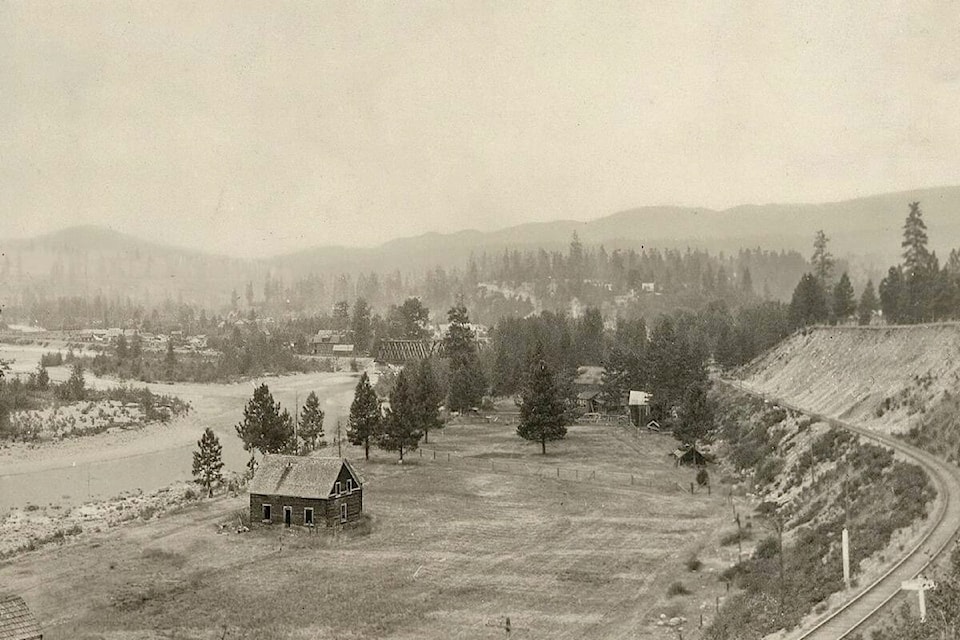A column by Bruce Uzelman
The lost Spanish mound is a legend, but it may be more than that. Evidence has accumulated over many years that suggest the legend is based on factual events.
In the 18th century, Spanish ships made many voyages from Mexico north along the Pacific Coast. The Spanish were exploring the coastal areas, mapping them and laying claim to additional lands.
Some of these voyages explored the mouth of the Columbia River. In 1793, Juan Martinez de Zayas travelled 14 miles up the Columbia on smaller boats, but was soon forced to head out to sea when conflict broke out with Native Americans. There seem to be no other recorded trips up the river.
Unrecorded excursions on the river possibly were possibly conducted by ship wrecked Spanish mariners. At least one Spanish wreck occurred near the mouth of the Columbia. A man, years after the wreck, told fur traders that he was the son of a Spanish sailor who had survived the wreck.
Scott Williams, who led a team to try to locate that 1725 shipwreck, stated to the Globe and Mail in 2016, “his father and three others had survived and lived with the Indians for a while … and then had decided to try their chances following the Columbia River. And they were never seen again.” Survivors of other documented ship wrecks or disappearances may have made the same trip.
Doctor Stan Copp of Langara College, also in the 2016 article, said that the Spanish may have travelled from Spain’s California colonies as far as British Columbia. (Those colonies were established in the last half of the 18th century.) So, an early Spanish presence in B.C. is plausible.
B.C. historian Bill Barlee, many years ago, suggested the Spanish, seeking the Seven Cities of Cibola, ventured far inland from the coast. The quest for the Seven Cities was a 16 century Spanish preoccupation, so that part is not credible. If the Seven Cities were the goal, the Spanish contact would have occurred much earlier, and perhaps did. The rest of Barlee’s theory is more robust.
Barlee, relying on the Similkameen legend and other evidence, told a fascinating tale. In the last half of the 18th century, the Spanish travelled from the Pacific up the Columbia River and then the Okanagan and the Similkameen Rivers. It was a large expedition, perhaps 50 or 60 men. Upon reaching the Similkameen, they captured a number of Similkameen people to use as carriers.
A Similkameen rock pictograph shows four men tied together by a rope or chain around their necks. The captives wear no hats, and are guarded by dogs and men with brimmed hats on horseback. Similkameen pictographs, informed Barlee, portrayed white men wearing hats, while men with no hats were indigenous. The Spanish, indeed, linked captives in the way shown and used war dogs.
Barlee continued. An altercation developed between the Spanish and the Similkameen captives and people. The Spanish inflicted heavy losses on them. The Spanish then headed north reaching Okanagan Lake, and proceeded on to the present location of Kelowna. They built a very large log stable to winter their horses. In 1863, the remains of this building were found by settlers or traders.
Over the winter the Spanish were decimated, by disease or conflict, and in the spring retreated along their previous route. The Indigenous peoples tracked them and prepared an ambush, just outside the Similkameen Valley. None of the Spaniards survived. The Similkameen people buried the Spaniards and some of their weapons in a “Spanish mound.” The location has been lost.
This story, Barlee allowed, involved some conjecture, but he also offered more evidence. In 1940, a piece of turquoise was linked to an indigenous burial plot in Okanagan Falls. He asserted that it was the only piece of turquoise documented with an indigenous burial. “This came from Spanish America. It came from Arizona, or it came from New Mexico or Mexico. No doubt about it!”
Barlee also described artifacts discovered near a Similkameen rock slide burial, which had been illicitly disturbed in 1950. A large iron spear point and an iron halberd, along with large copper wrist bands and heavy copper tiles, which were parts of armour or chain mail, were found. These items were presumably acquired by the Similkameen warriors after the battle, and were buried with them.
Doctor Copp came upon a sword in the archives of the Penticton Museum. It was found on the O’Keefe Ranch in the north Okanagan. It was later identified by the Canadian War Museum as Spanish, probably made in a Spanish colony. Doctor Copp believed it to be a Sinhalese sword from as far back as the 16th century. Sri Lanka had ties to Portugal and Spain in the colonial era.
It’s a tangled tale. The perspective of the Similkameen people has not yet been directly heard. That could be key to untangling the mystery – and the legend.
____
Bruce Uzelman, based in Kelowna, holds interests in British Columbia history as wells as current political and economic issues.
Bruce had a career in small business, primarily restaurant and retail. He holds a Bachelor of Arts, Advanced from the University of Saskatchewan, with Majors in Political Science and Economics.
Contact: urban.general@outlook.com

